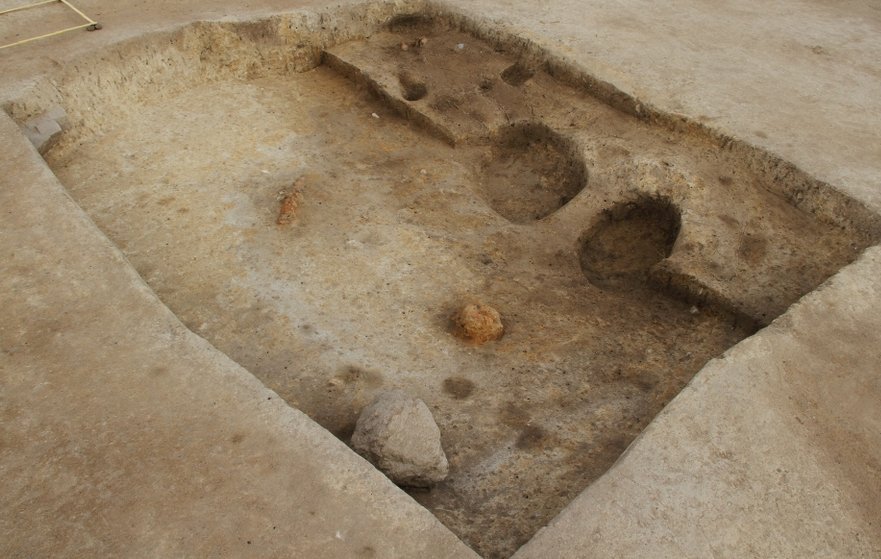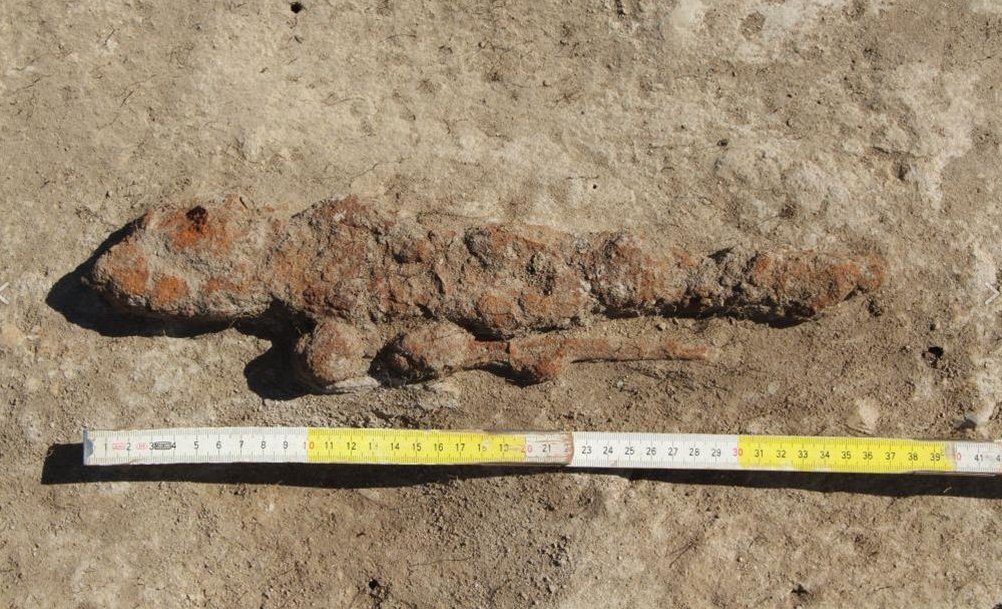MessageToEagle.com – Nearly 40 graves of men, women and children buried at the ancient graveyard, at the Norre Sandegard Vest site, Danish island of Bornholm.
The discovery was made by joint Polish-Danish excavation team working at the site since 2014.

This burial ground, dated to between 6th-7th century is one of the richest in whole Denmark.
Until 2013 it was believed that the burial ground was much smaller, however, an accidental find of a new grave pointed to the need of new research of the site.

Archaeologists discovered numerous grave goods inside the graves. Women were buried with jewellery and adornments, while men were buried mostly with weapons.
See also:
Mystery Of The Black Forest Egtved Girl: She Was Not From Denmark
Spectacular 5,000-Year-Old Stone Map Discovered In Denmark Sheds New Light On Ancient Farming
The finds from female graves include necklaces made of beads, fibulae, pendants, and toilet utensils. Among artefacts from men’s graves were swords, combat knives, spears, shields and belt adornments. In some of them there were also animal remains, consisting of either whole animal, either the head.
The site was probably chosen for the burial ground due to its location by the see in a near vicinity of a local seat of power. Existence of such is known from 9th century chronicles, like the one written by Wulfstan of Hedeby, informing of a single ruler controlling Bornholm island.
The manner in which the graves had been equipped or laid out, as well as the location of the cemetery itself, points to the significance the site once held for the local community, as it became a burial site for the elite of the age.
The site excavated by Polish and Danish archaeologists may be considered as evidence of local ruling dynasty’s existence.
MessageToEagle.com
Expand for referencesSpara
Spara
Spara






